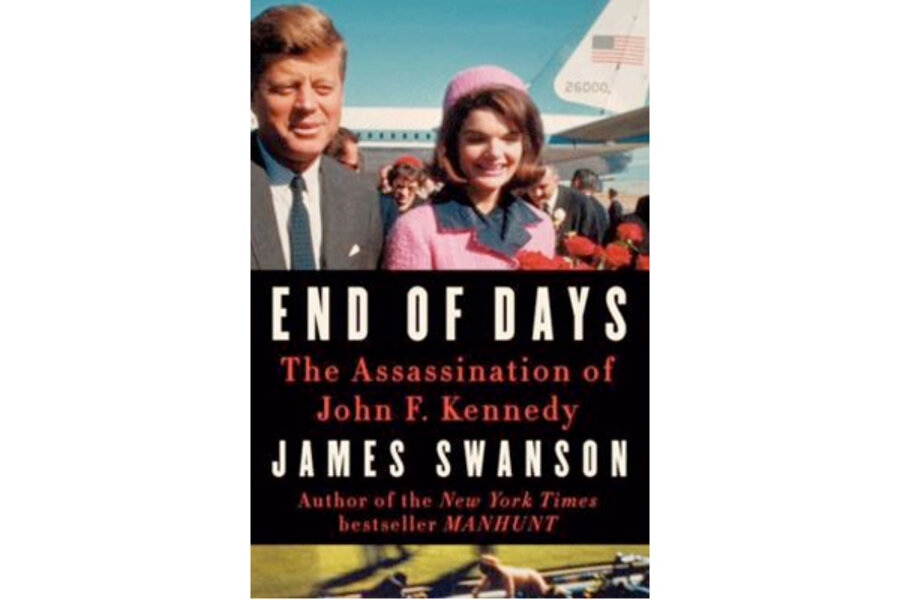End of Days
Loading...
The crowd was thrilled to see John F. Kennedy on that Thursday in 1963, including the woman who managed to get past security to pat his cheek and the girl who dashed from the crowd toward his motorcade and shouted, "Hello there!"
"Cue-ber, Cue-ber!" yelled two boys on the sidewalk, mocking the president's pronunciation of "Cuba" as he rode by. He glanced their way and a third boy snapped a photo: Kennedy standing in his car with a smile, a hand in mid-wave in the foreground and a diner in the background.
A president riding by in the open air, kids playing hooky to see him, critics and cranks outnumbered by fans: A purely ordinary visit that nobody remembers unless they were there. It was San Diego in June, after all. Dallas was more than five months away.
For better or worse, the ordinary days of the Kennedy administration aren't the ones that most people remember. We focus on crises and speeches, a wife and two children, and the great tragic mystery of Nov. 22.
But while books about the Kennedy Assassination could fill shelf after shelf, there aren't many modern ones that simply focus on the events of the day itself and avoid the dark world of conspiracy theories. That's where End of Days: The Assassination of John F. Kennedy by bestselling author James L. Swanson fits in as it arrives in time for the 50th anniversary of that dreadful day.
This isn't the best narrative of that day and that week. That honor belongs to the gripping first-section narrative of famed attorney Vincent Bugliosi's "Reclaiming History: The Assassination of President John F. Kennedy," which definitively proves there was no conspiracy. The narrative was spun off into a book of its own called "Four Days in November" and inspired the new movie "Parkland."
Nor does the new book shed new light on the assassination itself. Swanson, whose remarkable 2006 book "Manhunt" told the story of the chase to find John Wilkes Booth, relies entirely on other people's accounts and doesn't interview anyone.
What "End of Days" does provide is a basic, clear-eyed and complete narrative of Nov. 22 plus its prologue and aftermath. This is a book for today's young people whose parents aren't old enough to tell them where they were that day and who haven't yet tried to convince themselves that a lone crackpot couldn't have done this.
Oswald, inevitably, is the subject of much of the book. We see him mostly through the memories of his wife, his interview with a radio journalist in New Orleans, and transcripts of police interrogations. An angry and obsessed leftist, he's manipulative and evasive, possibly more intelligent than the book gives him credit for being. As Swanson notes, his motivation for the assassination remains unknown to this day.
The Kennedys, meanwhile, are recovering from Jacqueline's recent stillbirth as the Dallas trip approaches. But, if Swanson's speculation is true, their love has also reached the greatest height since their marriage.
Overall, Swanson doesn't spend much time analyzing events or people except to frequently note the obvious fact that the characters couldn't predict the future ("he did not know it now but..."). Surprisingly, the lack of frills actually gives the book its strength because there's little to distract from the pure propulsion of the narrative.
Like so many fine history books, "End of Days" is a nail-biter. Even though we know the terrible ending is coming, or perhaps because of it, we feel a growing sense of dread. We even feel the remarkable speed of events after the assassination, from the swearing in to the former First Lady's choosing of a resting place the very next day; Swanson will bring readers to tears when he describes how Jacqueline Kennedy accompanied her husband on each step of his voyage from Dallas to Arlington National Cemetery, "until she could follow no more."
The what-ifs pile up almost page-by-page. What if the bullet that Oswald shot at a right-wing leader had met its mark instead of hitting part of a window frame? What if his co-workers in the book depository had discovered him lingering on the sixth floor with a rifle? What if it had continued to rain that day and the limousine had had to put its top down?
The problem with what-ifs is that we fail to remember all the events in history that don't go wrong, all those countless things that go according to plan despite the potential for chaos every second.
In San Diego, a few blocks from my home, the diner that Kennedy passed is still open and still remembers his ordinary visit. An outside wall and the menu feature reproductions of the photo of him passing in front of the restaurant. JFK was here!
How ordinary. How extraordinary.
Randy Dotinga is a Monitor contributor.








